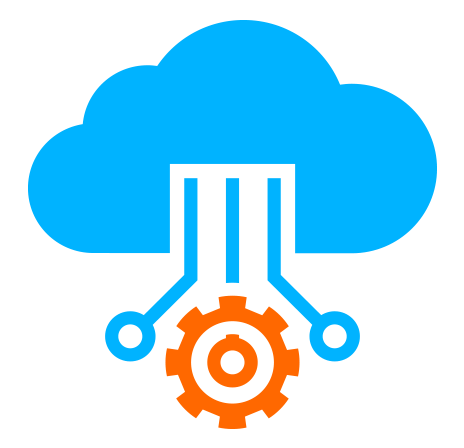 Server
Colocation
Server
Colocation
 CDN
Network
CDN
Network
 Linux Cloud
Hosting
Linux Cloud
Hosting
 VMware Public
Cloud
VMware Public
Cloud
 Multi-Cloud
Hosting
Multi-Cloud
Hosting
 Cloud
Server Hosting
Cloud
Server Hosting
 Kubernetes
Kubernetes
 API Gateway
API Gateway

Business continuity and disaster recovery (BC/DR) are vital strategies that together ensure an organization can maintain operations and quickly restore IT systems during and after disruptions, minimizing downtime and financial loss. A comprehensive BC/DR plan involves risk assessment, preventive measures, clear recovery objectives, and regular testing to protect business operations and recover seamlessly without downtime.
Business continuity is a proactive approach to ensure critical business operations continue during a disruption. Disaster recovery focuses specifically on restoring IT infrastructure and data after a disruption. Both together form a resilient strategy to protect against downtime due to cyberattacks, natural disasters, hardware failures, or other crises that threaten business operations and data integrity.
|
Aspect |
Business Continuity |
Disaster Recovery |
|
Approach |
Proactive - maintain operations during crisis |
Reactive - restore IT systems post-crisis |
|
Focus |
People, processes, communication |
IT infrastructure, data recovery |
|
Timeframe |
Before, during, and after disruption |
Immediately after disruption, focused on recovery |
|
Tools |
Crisis plans, communication systems |
Data backups, failover, recovery tools |
|
Goal |
Operational stability |
Quick IT restoration |
Without thorough BC/DR planning, organizations risk prolonged downtime, financial loss, damaged reputation, and even business failure. An integrated BC/DR approach ensures continuous customer service, operational resilience, and rapid IT recovery, safeguarding revenue and brand trust.
Risk Assessment: Identify vulnerabilities in business operations and IT systems.
Preventive Measures: Implement redundancies, backups, and security protocols.
Communication Plans: Define roles, responsibilities, and notification protocols to coordinate response.
Disaster Recovery Procedures: Document steps for IT staff to restore operations.
Training & Testing: Conduct regular drills to validate and improve readiness.
Recovery Objectives: Set clear Recovery Time Objectives (RTO) and Recovery Point Objectives (RPO) to minimize downtime and data loss.
Organizations must analyze risks like cyberattacks, hardware failure, supply chain disruptions, or natural disasters to prioritize protection efforts. Mitigation includes implementing secure backups, redundant systems, and alternative work environments to maintain business functions under adverse conditions.
> RTO (Recovery Time Objective): Maximum acceptable time to restore operations after disruption.
> RPO (Recovery Point Objective): Maximum acceptable data loss measured by time.
Setting realistic RTO and RPO helps optimize recovery efforts, ensuring operations resume quickly with minimal data loss.
Cybersecurity is integral to prevent additional damage during disruptions. Regular updates, secure cloud backups, and proactive threat mitigation reduce risk. Inadequate cybersecurity can compound downtime, data loss, and financial damage.
> Minimize downtime and financial impact.
> Maintain customer trust by providing uninterrupted services.
> Ensure regulatory compliance.
> Build organizational resilience for future disruptions.
Cyfuture Cloud offers robust cloud infrastructure designed to support comprehensive business continuity and disaster recovery plans. Through secure and scalable cloud hosting, automated backups, and flexible recovery solutions, Cyfuture Cloud enables businesses to protect critical workloads and recover IT operations quickly without downtime.
Cyfuture Cloud’s solutions include:
> Multi-region data redundancy to guard against regional outages.
> Automated snapshot backups with fast restore capabilities.
> Scalable infrastructure for rapid resource allocation during recovery.
> Integrated security protocols to safeguard data integrity.
This integrated approach makes Cyfuture Cloud a reliable partner in ensuring uninterrupted business operations and swift IT recovery during any disruptive event.
Q1: What is the difference between business continuity and disaster recovery?
Business continuity ensures essential operations run during a disruption, while disaster recovery focuses on restoring IT systems after the incident.
Q2: How often should BC/DR plans be tested?
Plans should be tested regularly—at least annually or whenever significant changes occur—to ensure effectiveness and readiness.
Q3: What industries require BC/DR compliance?
Industries like finance, healthcare, and critical infrastructure often have mandatory BC/DR regulations to protect sensitive data and ensure service availability.
Q4: What are typical causes of business disruption?
Common causes include cyberattacks, natural disasters, hardware failures, human error, and supply chain interruptions.
A well-structured business continuity and disaster recovery plan is essential for modern enterprises to safeguard operations against disruption. By combining strategic planning, risk assessment, preventive measures, and clear recovery objectives, organizations can ensure they not only survive incidents but maintain trust and competitive advantage. Cyfuture Cloud offers the advanced infrastructure and tools needed to implement effective BC/DR, helping businesses plan, protect, and recover without downtime.

Let’s talk about the future, and make it happen!
By continuing to use and navigate this website, you are agreeing to the use of cookies.
Find out more


